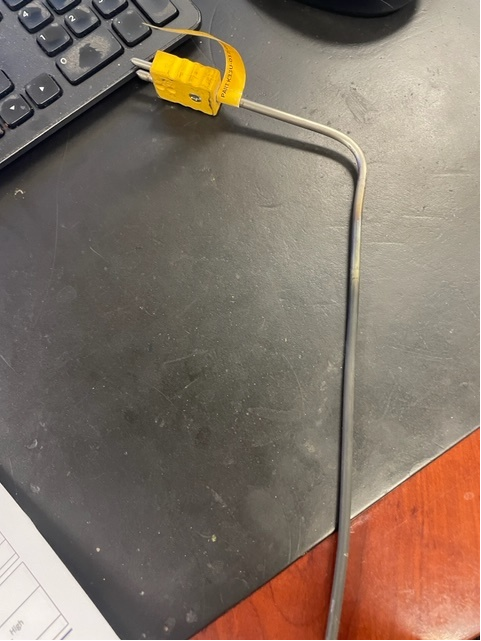Are you using a part temperature thermocouple? Have you ever experienced the controller thermocouple and part temperature thermocouple not profiling similar temperatures?
Many of our clients are required by the American Petroleum Institute (API) or other governing bodies to apply a part temperature thermocouple with a load. There are times when the part temperature thermocouple does not profile the controller thermocouple temperature.
Recently Thermo-Temp received a support call from a client who was getting an anomalous furnace controller thermocouple temperature reading in their industrial heat treating process. The controller thermocouple was reading a drastically lower process temperature than the load thermocouple.
The customer reported that his controller had a setpoint of 1200 degrees Fahrenheit (1200F). Therefore, the controller was calling for the chamber temperature to ramp up because the controller thermocouple in the chamber was measuring a 700F process temperature. However, the other thermocouple that was attached to the product in the chamber was reading approximately 1200F on the second input of his recorder, a 500F difference!
Our support team suspected that there must be a secondary junction on the controller thermocouple at a location outside the chamber. Our suspicions were reinforced when the customer sent us a picture of the configuration showing the magnesium oxide (MgO) thermocouple that was inserted into the heating chamber. The Inconel sheath of the controller thermocouple was bent at a nearly 90 degrees angle at its entry point to the chamber. The lead wires of the thermocouple, which are very thin and fine (almost like a strand of hair), had very likely broken at the bend. This created a secondary junction just outside of the chamber insertion point. This would result in the thermocouple sensing the temperature from just outside of the chamber instead of from the inside the chamber.
Our troubleshooting diagnosis was confirmed when we asked the client to install a new controller thermocouple in the same hole in the chamber without bending it. After doing that, the client confirmed that the controller thermocouple and the product thermocouple were reading approximately the same temperature. Problem solved.
MgO thermocouples have fully annealed metal sheaths that are designed to be pliable and can be formed into different MgO thermocouples have fully annealed metal sheaths that are designed to be pliable and can be formed into different shapes, depending on the specific configuration of the heat processing application. This can make it easier to reach spots that are difficult to reach with a straight sheath. However, such bending and forming should be minimized or avoided if possible. Instead, order the thermocouple for purchase from Thermo-Temp with the required form or bend in place. If it is necessary to form a thermocouple, be sure to stay within the manufacturer’s guidelines. It is best to have the thermocouple bent during manufacturing as this will allow for the bend and proper length of wire to be extended to the connector. Stretching or stressing the wire after it is manufactured can lead to breakage or separation of the wire and possibly a new junction of the wires at that spot.
Contact the experts at Thermo-Temp if you are having a problem with your industrial thermal processing temperature measurement and control application, or if you have a question about the proper selection and use of thermocouples for your heat treatment and processing application.
Thermo-Temp offers products, calibration and maintenance for your industrial heating and combustion requirements.


